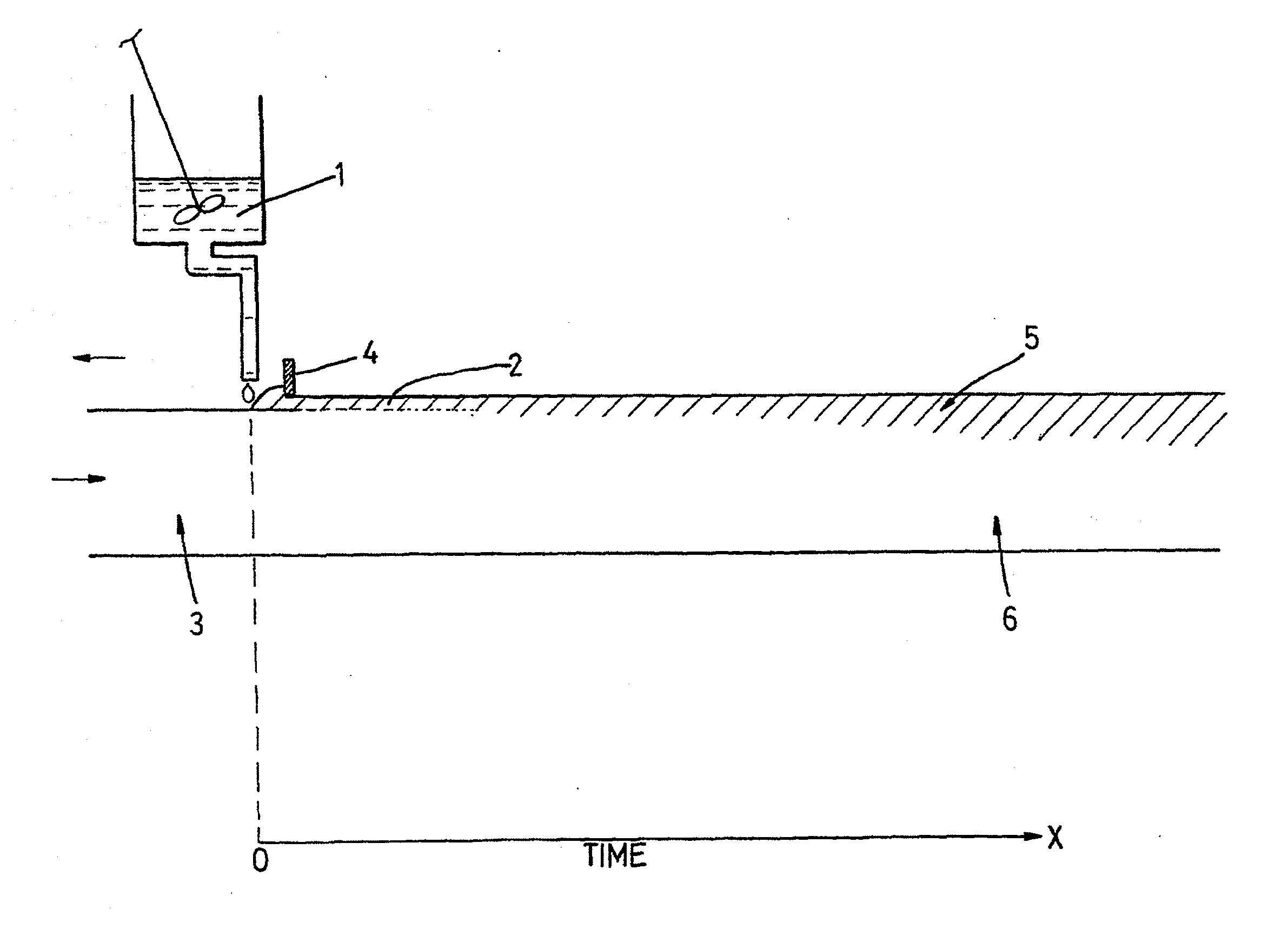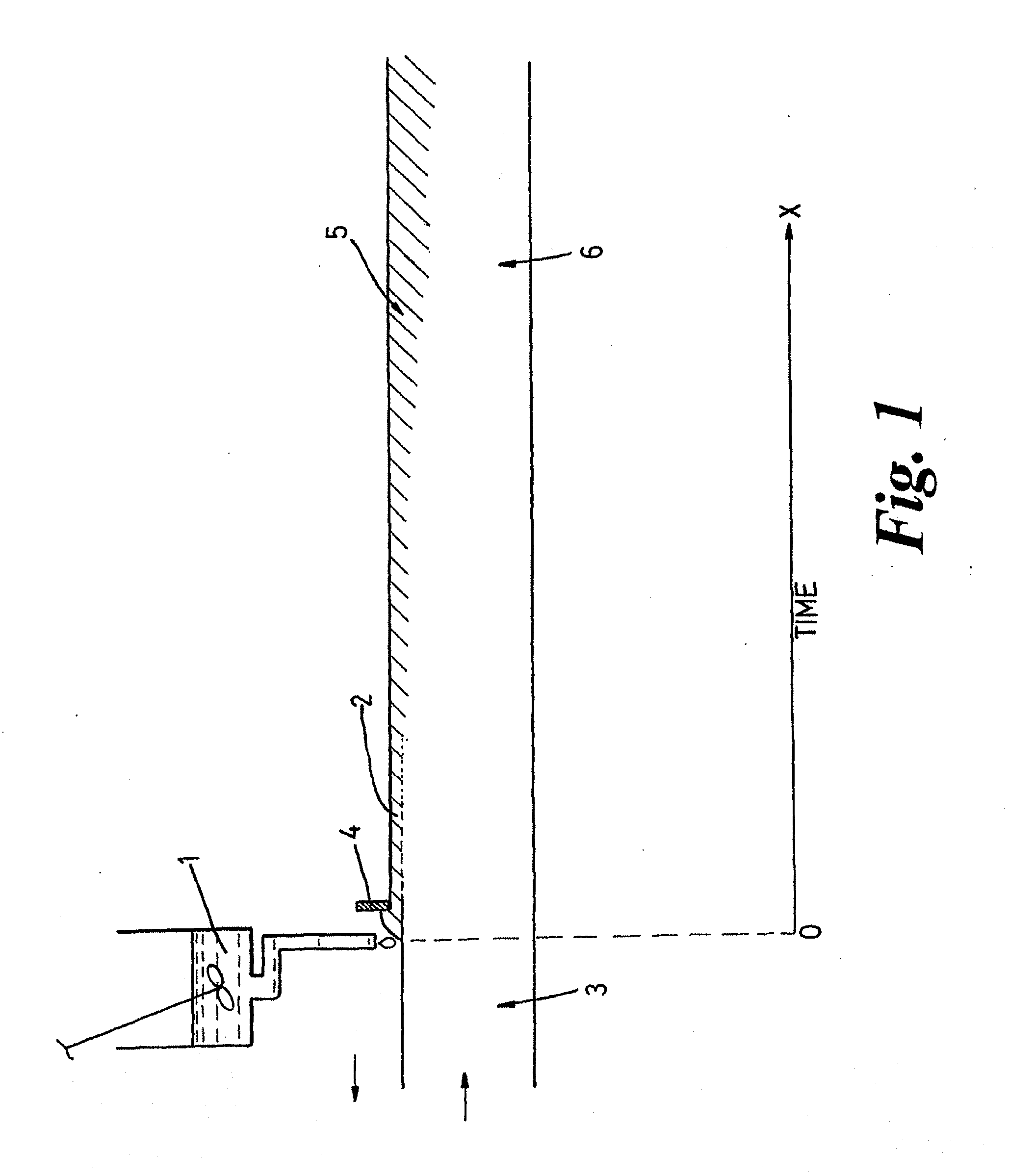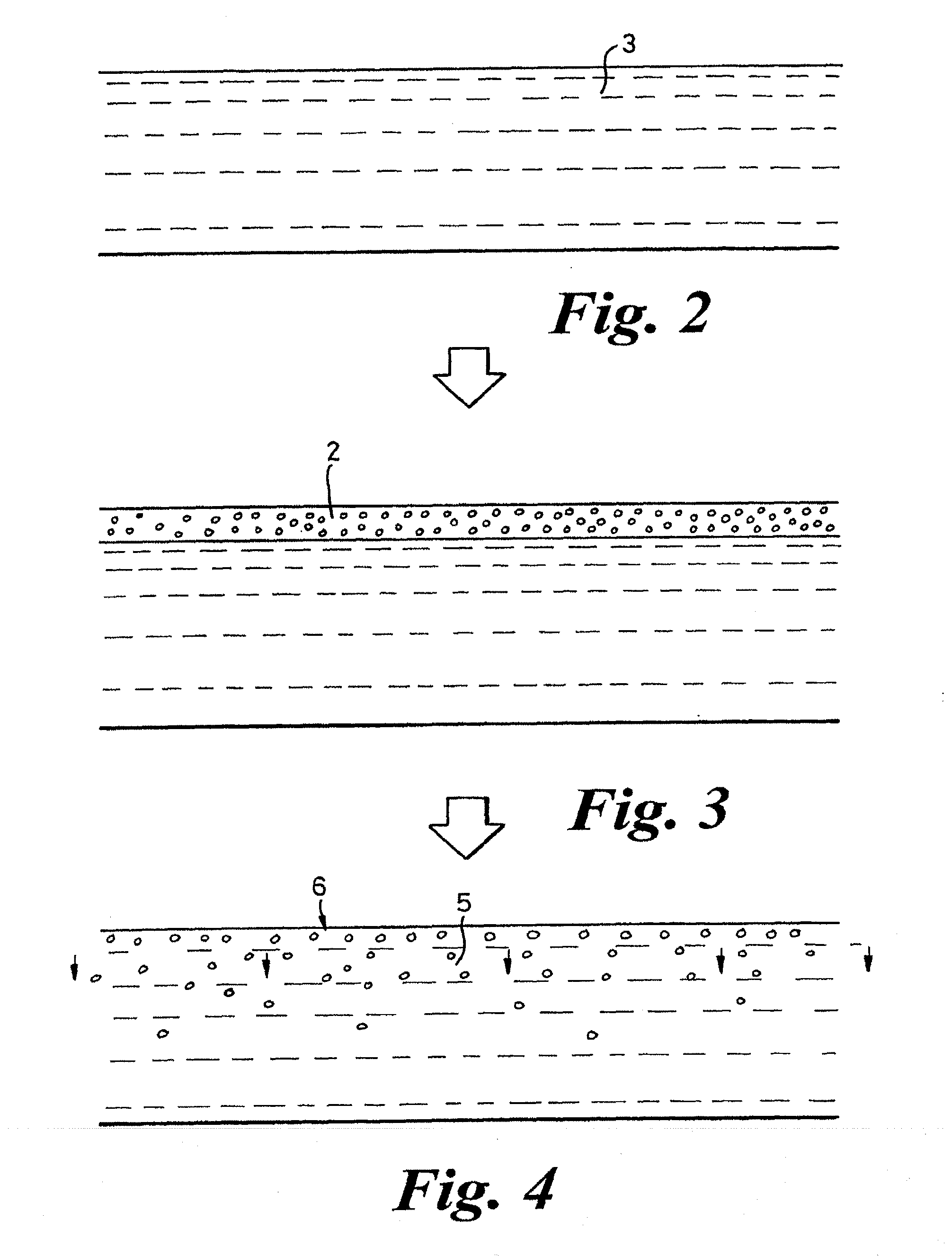Films for use as dosage forms
a technology of film and dosage form, which is applied in the direction of pill delivery, coating, special surfaces, etc., can solve the problems of non-uniform composition of film, time-consuming drying equipment, and inability to meet the requirements of use,
- Summary
- Abstract
- Description
- Claims
- Application Information
AI Technical Summary
Benefits of technology
Problems solved by technology
Method used
Image
Examples
example 1
Solution A
[0088]
Hydroxypropyl methylcellulose*10.0% 100 gGlycerin1.0% 10 gTriethyl citrate1.0% 10 gPurified water 88%880 g*Methocel E50 LV Premium (ex Dow chemicals)
[0089]The hydroxypropyl methylcellulose (HPMC) was carefully added to the purified water at 80° C. with stirring. This was followed by the addition of glycerin. The solution was cooled to 30° C., maintaining agitation to produce a colourless, viscous solution. Triethyl citrate was slowly added to the cooled solution with gentle mixing to produce a clear, viscous solution.
[0090]The solution was allowed to stand for 24 hours to allow it to naturally de-aerate. This resulting film forming solution was used to prepare films using an adjustable doctor blade (R.K. Print Coat Instruments Ltd, Royston, Herts). The gap on the doctor blade was set at 1.6 mm and used to draw down the solution onto a glass plate, which was then air dried for 24 hours at 25° C., 45% R.H.
[0091]Once dry this substrate film (film A) had evenly applied t...
PUM
 Login to View More
Login to View More Abstract
Description
Claims
Application Information
 Login to View More
Login to View More - R&D
- Intellectual Property
- Life Sciences
- Materials
- Tech Scout
- Unparalleled Data Quality
- Higher Quality Content
- 60% Fewer Hallucinations
Browse by: Latest US Patents, China's latest patents, Technical Efficacy Thesaurus, Application Domain, Technology Topic, Popular Technical Reports.
© 2025 PatSnap. All rights reserved.Legal|Privacy policy|Modern Slavery Act Transparency Statement|Sitemap|About US| Contact US: help@patsnap.com



